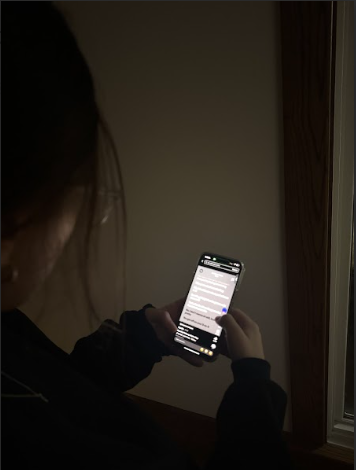I did not have high hopes entering this movie. Built on the fact that, ever since I was little, I have hated the blue people from Avatar. They always rubbed me the wrong way. Whether they fell into the uncanny valley or they were just an off-putting departure from standard human form, my five-year-old brain could not handle the Na’vi. After 13 years, I have put aside my differences with the film series and decided to give the Way of Water a chance. I am glad that I did.
Avatar: The Way of Water is the long-awaited sequel to James Cameron’s Avatar film from 2009. In a continuation of the narrative, Jake Sully is now the chief of his clan, has three biological children and an adopted daughter, and is leaving behind his tribe for fear that his presence will lead to more human encroachment.
Refreshing your memory of the original film may help but is not necessary to enjoying the movie. The new characters and coherent flow make it easy to follow what is going on regardless of prior knowledge.
The main conflict in this film is set up by humans who want to utilize Pandora for resources and the Na’vi’s fight to retain their land and culture. The film’s ability to create a deep care in the audience for creatures that are not real is difficult to grasp unless one sees the film. The creatures that inhabit Pandora and the struggles of Sully’s character as a father set up the emotional foundation of the battles later in the film.
Much of the middle portion of the movie lacks classic action, but the inaction is supplemented by the aquatic visuals. The movie captures the fictional world’s water in such detail that the film looks as if it were shot on location. The montages and training sequences in the water are integral to the character and world building in the movie. The aquatic Na’vi interact with whale-like creatures called Tulkun that, despite being completely computer generated, take on a life-like realness that adds to the emotional depth of the film.
The movie juggles a lot of side-plots, unsurprising considering the three hour run time and multiple planned sequels, with a consistent coherence that keeps the watchers entertained – for the most part. Certain subplots and scenes linger too long throughout the movie. Though, I was often okay with these scenes because they allowed the viewer to simply enjoy the visual masterpiece.
The movie needs to be seen in 3D. The film was made to be seen with 3D glasses and it makes every visual even more world-bending and every character more real. The movie’s ability to turn alien objects and creatures into beings that can be interacted with is invaluable. It allows one to feel connected to the world, and in a 3D space it allows one to feel like they are truly part of the world.
Entering the classroom of John Penola, I say, “I hear you are into Avatar?” Much to my amusement, he was in the process of putting Avatar stickers on his classic sticker-plastered podium. English teacher Mr. Penola is in love with the world of the Na’vi. He spoke about how this second Avatar film allows people to enter the world of Na’vi for themselves. Penola brought up that in the Animal Kingdom, there is a ride that allows a patron to enter Pandora for three minutes, but Avatar the Way of Water allows viewers to spend three hours in the dazzling world.
Mr. Penola brings up great points as to why the movie is so easy to love and so amazing to watch. The movie, while being a classic action film, deals with complex characters and uses clever visuals to keep viewers subliminally emerged in the world. Jake Sully’s difficulty with juggling the roles of father and warrior infuses complexity into the main character of the film.
The movie is fun and certainly worth the watch. The stunning visuals, coherent narrative, and emotionally fulfilling characters lead to an experience that leaves viewers satisfied, though casual moviegoers may be a bit bored by the length. Overall, I recommend watching this movie before it leaves theaters, a home television would never do it justice.









